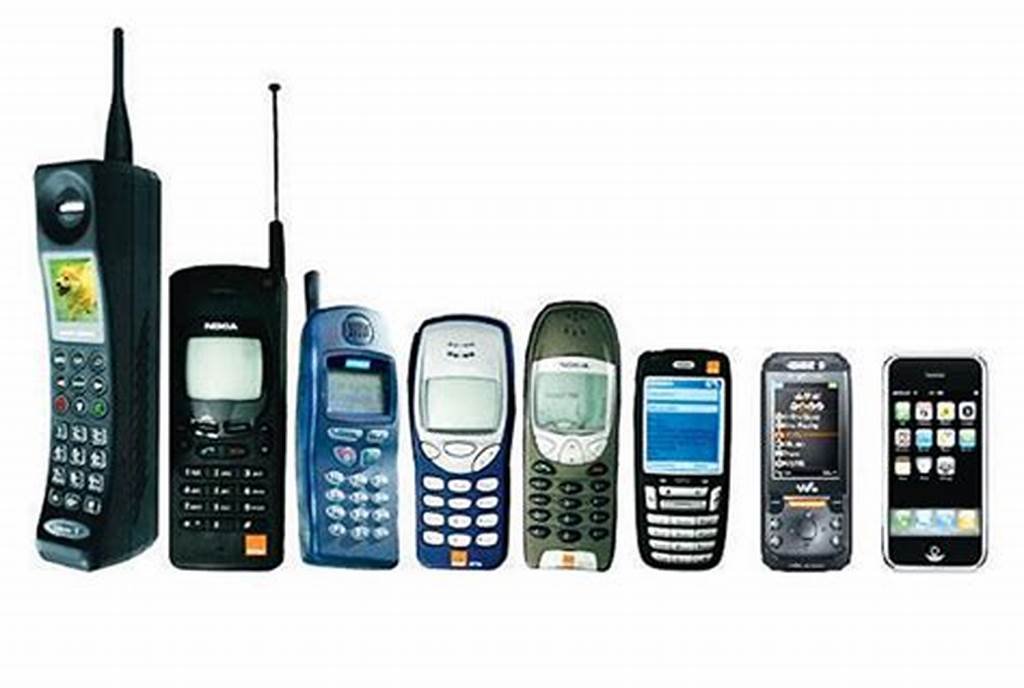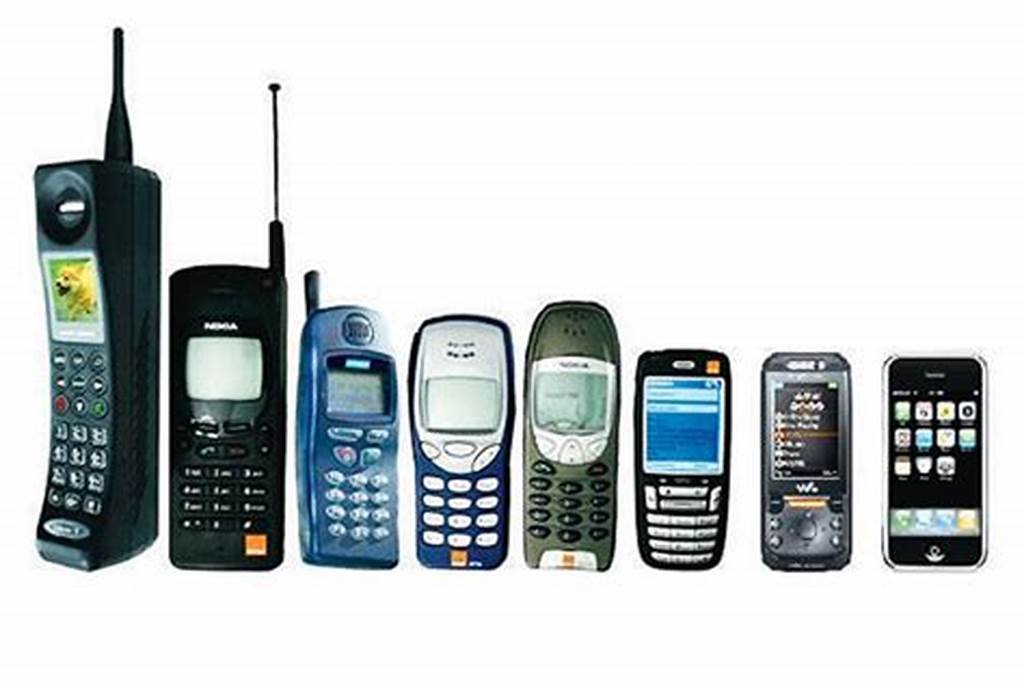The mobile phone has come a long way since its humble beginnings. From the bulky, brick-like devices of the early 1980s to the sleek, powerful smartphones of today, mobile technology has experienced a remarkable transformation. This evolution has not only changed the way we communicate, but it has also revolutionized how we interact with the world—shaping everything from entertainment and work to social media and online shopping.
Let’s take a journey through the decades and explore how mobile phones have evolved into the indispensable gadgets we rely on today

The Birth of Mobile Phones (1980s)
The first true mobile phone—the Motorola DynaTAC 8000X—was released in 1983. Weighing a hefty 2.5 pounds and standing at 10 inches tall, this “brick” phone was far from portable by today’s standards. It offered 30 minutes of talk time and could store up to 30 phone numbers. The price tag? A whopping $3,995.
In the early days, mobile phones were largely seen as a luxury item, accessible only to the wealthy or those in business. The primary function of these early devices was to make and receive calls, with little to no additional features. Yet, even in this early phase, the concept of mobile communication was groundbreaking. The idea of carrying a phone in your pocket or bag, untethered from a fixed landline, would become the foundation for everything that followed.
The Rise of the Mobile Revolution (1990s)
By the 1990s, mobile phones had become more accessible, though they were still relatively bulky. Nokia, Motorola, and Ericsson dominated the market, producing phones that were more compact and reliable. The Motorola StarTAC (1996) was a game-changer—it was one of the first flip phones and is widely regarded as the first truly portable mobile device. Its compact size, combined with a simple user interface, marked the beginning of the shift toward mobile phones as a mass-market product.
SMS (Short Message Service) also made its debut in the 90s, forever changing how people communicated. Text messaging was initially viewed with skepticism, but it quickly became a dominant form of communication, paving the way for mobile apps and social media.
At this point, mobile phones still had one main purpose: calling. But the foundation for something much bigger was being laid. The first taste of true mobile entertainment emerged with the introduction of mobile games like Snake on Nokia phones, a simple but addictive game that would become one of the most iconic mobile games of all time.
The Smart Revolution (2000s)
As the millennium turned, so did the mobile phone industry. The 2000s brought significant advances in both hardware and software, ushering in the era of the smartphone. In 2000, Nokia launched the Nokia 3310, which would go on to become a symbol of mobile reliability, loved for its sturdy build and long battery life. But the most important innovation in this period came from Apple and BlackBerry.
In 2007, Apple introduced the first iPhone, a device that would go on to change the world. Unlike its predecessors, the iPhone featured a touchscreen, which eliminated the need for physical buttons, and it was the first mobile device to combine a phone, music player, and internet browser into a single gadget. This was the beginning of the modern smartphone era, with the iPhone revolutionizing not only mobile phones but also the broader tech landscape.
Around the same time, BlackBerry rose to prominence by offering a QWERTY keyboard and security features tailored for business users, quickly becoming the preferred mobile device for professionals. The competition between Apple and BlackBerry marked the start of a fierce rivalry that would shape the mobile industry for years to come.
The Era of App Culture (2010s)
The 2010s marked a dramatic shift in mobile technology, as smartphones became more than just communication tools—they became pocket-sized computers. With the rise of Google Android and continued advancements from Apple, the smartphone ecosystem flourished. App stores like the Apple App Store and Google Play transformed how people interacted with their phones, giving them the ability to download apps for almost every aspect of their lives—social media, gaming, banking, fitness, education, and much more.
By 2010, the smartphone had become an essential part of daily life. Devices like the iPhone 4 and the Samsung Galaxy S series introduced improved screens, cameras, and processing power. The touchscreen interface evolved, and virtual assistants like Siri and Google Assistant made smartphones smarter than ever before.
The introduction of 4G LTE networks in 2011 further boosted mobile internet speeds, allowing users to stream video, play high-quality mobile games, and engage in real-time communication with ease. Mobile photography also took a huge leap forward, with smartphones like the iPhone 7 and Samsung Galaxy S7 offering impressive cameras that rivaled some standalone digital cameras.
The Modern Smartphone (2020s and Beyond)
As we enter the 2020s, smartphones have become an integral part of daily life, blending seamlessly into nearly every aspect of modern existence. Today’s devices are powerful mini-computers, capable of performing tasks that were once only possible on desktop computers. The smartphones of today boast high-definition cameras, multiple cores for processing power, and immersive displays that are nearly edge-to-edge.
5G technology is now being deployed, promising faster data speeds and more reliable connections, making it possible to stream high-definition content, play mobile games with minimal lag, and improve real-time communication.
Moreover, smartphones are now equipped with a wide array of cutting-edge technologies:
- Foldable screens like the Samsung Galaxy Z Fold have redefined the form factor of phones, offering more screen real estate in a compact design.
- Augmented Reality (AR) is becoming an integral part of mobile gaming and shopping experiences.
- Artificial Intelligence (AI) is embedded deeply into the smartphone’s ecosystem, helping with everything from photo optimization to intelligent app recommendations.
Beyond hardware, mobile operating systems like iOS and Android have continued to evolve, becoming more intuitive, secure, and personalized. App ecosystems are more vast and varied than ever, encompassing everything from fitness tracking to virtual reality experiences.
Where Are We Heading?
Looking to the future, the next big innovation could be the integration of AI-powered virtual assistants in ways we can’t yet imagine, as well as the potential for full integration with smart cities and the Internet of Things (IoT). Foldable displays and AR/VR capabilities might become standard, and we may even see the rise of brain-machine interfaces that blur the line between our physical and digital lives.
In terms of mobile accessories, wireless charging, wearable technology (smartwatches, AR glasses), and external battery solutions will continue to improve, further enhancing the overall user experience. Eco-friendly materials will likely play a larger role as the industry moves towards sustainability, addressing concerns about e-waste and carbon footprints.
Conclusion
The journey of the mobile phone, from the bulky and expensive bricks of the 1980s to the pocket-sized powerhouses of today, is a testament to the incredible technological advancements we’ve seen in just a few decades. Mobile phones have evolved into something far beyond their original purpose of communication—they are now our cameras, entertainment hubs, productivity tools, health trackers, and so much more. The future holds exciting possibilities as smartphones continue to push the boundaries of what’s possible, promising even greater advancements in the years to come.

